1. Centralia, Pennsylvania
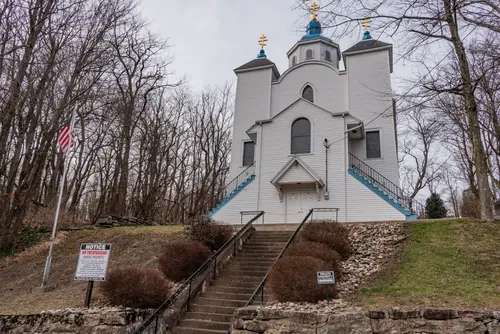
Walking through Centralia today, you might think it’s just an abandoned, overgrown town with empty streets and creeping smoke rising from cracks in the ground. The landscape is eerily quiet, with wildflowers and grass overtaking what were once homes and shops. But the town’s emptiness is due to an underground coal mine fire that has been burning since 1962. Entire neighborhoods were evacuated as the fire spread, creating dangerous levels of carbon monoxide and sinkholes.
What appears peaceful is actually the result of decades of a slowly burning disaster beneath the surface. The smoke that curls up from the ground isn’t mist; it’s carbon monoxide and other toxic gases escaping from the fire. Centralia is now a ghost town, a haunting reminder of industrial accidents and the stubborn persistence of nature reclaiming space. Visiting is almost like stepping into a time capsule of abandoned American history.
2. Manzanar, California
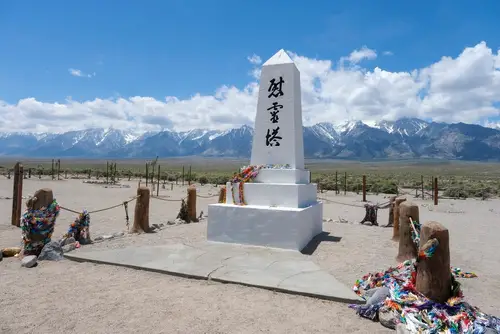
Manzanar looks like a quiet desert landscape framed by mountains, almost like a perfect place for a contemplative hike. The wide-open spaces and subtle brush of sand give it a sense of calm and isolation. But during World War II, this serene spot was one of ten internment camps where Japanese Americans were forcibly relocated. Thousands of people lived here under armed guard, their freedoms stripped away simply because of their ancestry.
Today, you can see reconstructed barracks and interpretive signs, and the quiet landscape holds the echoes of a painful history. The mountains that seem so peaceful were once a backdrop to loss, fear, and resilience. Walking the paths now, it’s hard not to feel a deep reverence for the families who endured these conditions. Manzanar reminds visitors how beauty and tragedy can coexist in one place.
3. Devil’s Tower, Wyoming
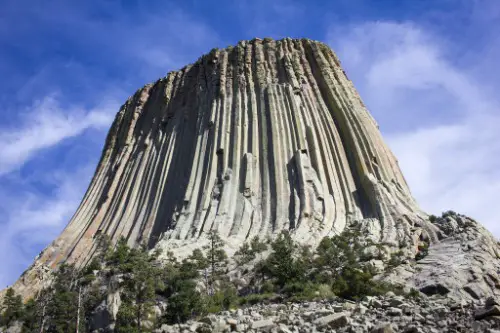
From a distance, Devil’s Tower rises from the prairie like a natural monument frozen in time, a favorite spot for climbers and photographers alike. Its sheer columns of rock and the surrounding forest make it look like a serene escape from modern life. But for Native American tribes, it is a sacred site with centuries of spiritual significance, tied to legends of battles and protection. The peaceful scenery belies the struggles and rituals historically connected to the tower.
The story of this rock formation includes conflicts over access and respect, including disputes with the U.S. government and climbers ignoring ceremonial closures. The serenity of the towering monolith contrasts sharply with the cultural tension it has endured. Standing at its base, you’re reminded that the land holds stories far older and more complex than it appears. It’s a stunning reminder that what seems tranquil often has layers of meaning beneath it.
4. Gettysburg, Pennsylvania
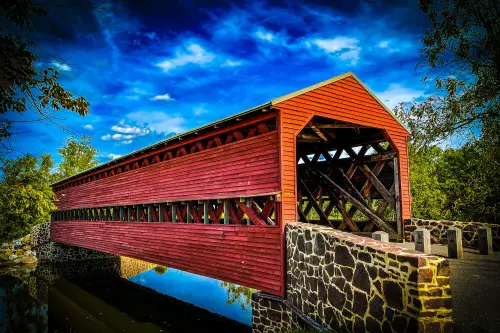
Gettysburg’s rolling hills and picturesque farmland make it seem like the perfect spot for a quiet countryside stroll. You might imagine farmers working peacefully and birds chirping among the trees. But in 1863, this town was the site of one of the bloodiest battles in the Civil War. Tens of thousands of soldiers died here, and the surrounding landscape became a battlefield littered with the dead and wounded.
Visiting today, the calm green fields seem almost surreal against the history they hold. Monuments and preserved battlegrounds dot the area, telling stories of bravery, loss, and strategy. The quiet atmosphere belies the chaos that once erupted across these fields, making it both haunting and humbling. Gettysburg is a reminder that places can be beautiful while carrying the weight of unimaginable history.
5. Angel Island, California
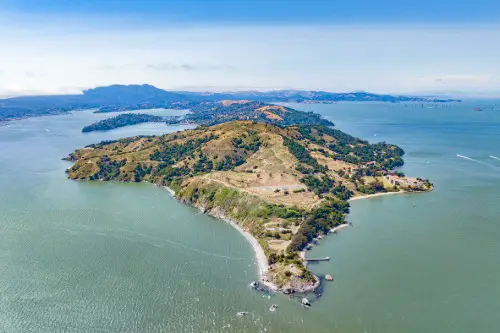
Angel Island in the San Francisco Bay is now a peaceful retreat with walking trails, picnic spots, and scenic views of the Golden Gate Bridge. Visitors enjoy its calm waters and hiking paths without realizing the island’s dark past. It was once an immigration station, often called the “Ellis Island of the West,” where thousands of Chinese immigrants were detained, sometimes for months, under harsh conditions. Many were interrogated, separated from families, and turned away due to discriminatory laws.
The gentle breeze and panoramic views mask decades of suffering, fear, and frustration. Historic barracks remain as a solemn reminder of the people who passed through, hoping for a new life. The island’s beauty today feels bittersweet when you consider the stories of hope mixed with hardship. It’s a place where history quietly whispers through the trees and shorelines.
6. Bloody Point, Maryland

The Chesapeake Bay near Bloody Point is now a serene area with calm waters, lighthouses, and views perfect for kayaking. The surrounding marshlands and sandbars suggest a peaceful, natural retreat. But the area earned its grim name from violent clashes in the 1600s between colonial settlers and Native American tribes. The conflict resulted in numerous deaths, leaving a lasting mark on the region’s history.
Today, anglers and boaters enjoy the waters without thinking about the bloodshed that once occurred there. The lighthouse stands as a beacon over waters that have witnessed centuries of tension and tragedy. The contrast between historical violence and contemporary leisure is striking. Visiting this quiet bay invites reflection on how places can heal over time while still carrying echoes of the past.
7. The Antietam Battlefield, Maryland

The rolling fields of Antietam are strikingly peaceful, with tall grass and gently swaying trees creating an almost pastoral scene. You might expect it to be a quiet, untouched piece of land. Yet in 1862, this site witnessed the single bloodiest day in American military history. Over 23,000 soldiers were killed, wounded, or missing, leaving an indelible mark on the nation.
Walking along the battlefield today, it’s easy to feel the contrast between the scenery and its violent history. Plaques, cannons, and preserved areas help visitors imagine the intensity of the fighting. The quiet landscape encourages reflection, making it a place where peace and tragedy coexist. Antietam serves as a reminder that even the calmest scenes can hold stories of immense suffering.
8. Trail of Tears National Historic Trail
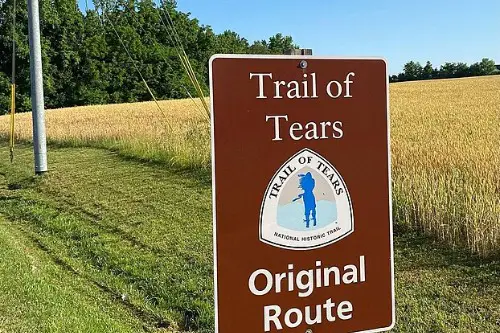
Parts of the Trail of Tears look like ordinary forest paths or open plains, perfect for hiking and enjoying nature. But these trails trace the forced relocation of Native American tribes in the 1830s. Thousands of people were removed from their ancestral lands and endured disease, starvation, and death on their journey westward. What seems like a peaceful route is actually a corridor of immense historical trauma.
Markers and interpretive signs along the trail give visitors a glimpse into the human cost of these removals. The quiet beauty of the land today contrasts sharply with the suffering that once took place there. Walking the path can be humbling, a reminder that history is layered beneath the most serene surfaces. Nature’s calmness offers no comfort to the echoes of past hardships.
9. Cahokia Mounds, Illinois
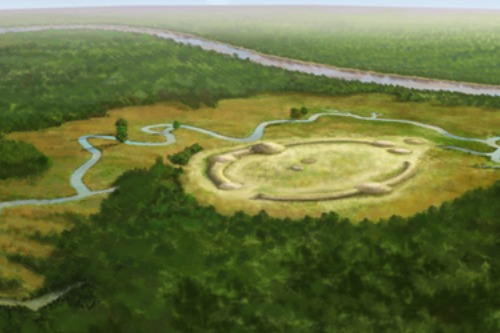
Cahokia Mounds might look like a series of gentle, grassy hills surrounded by trees and open fields. It’s easy to imagine picnics or lazy afternoons in such a peaceful setting. But this was once the site of a sprawling pre-Columbian city, home to tens of thousands of people. Archaeological evidence shows complex social hierarchies and even ritual practices, including human sacrifice.
The largest mound, Monks Mound, dominates the landscape as a reminder of the city’s former power and influence. The serene exterior masks a society with spiritual and political complexity, where rituals could be intense and sometimes deadly. Visitors walking the paths might feel tranquility, but they’re also standing on centuries of human triumph and tragedy. Cahokia is a vivid reminder that history often hides beneath nature’s calm.
10. Fort Vancouver, Washington

Fort Vancouver sits on the banks of the Columbia River with a quiet, restored fort and well-kept green spaces. Today, it seems like a calm historical park ideal for a stroll or a family outing. However, this site was once a bustling hub of the fur trade in the 19th century and a flashpoint for conflict between European settlers and Native American tribes. Tensions often resulted in violent clashes and forced displacement of indigenous communities.
The fort’s reconstructed buildings now offer educational tours, but the serenity of the grounds belies its turbulent past. Visitors can admire the craftsmanship of the fort while imagining the struggles that unfolded within its walls. What seems like a peaceful riverside retreat was once a center of negotiation, conflict, and survival. Fort Vancouver is a place where the calm river meets a history of cultural collision.
11. Harper’s Ferry, West Virginia
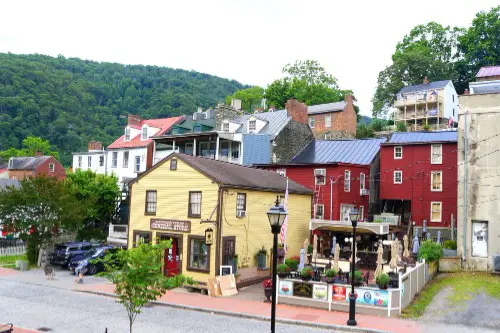
Nestled at the meeting point of the Potomac and Shenandoah Rivers, Harper’s Ferry is picture-perfect with its rivers, trails, and charming historic streets. It feels like an ideal spot for a lazy afternoon of sightseeing. Yet this town was the site of John Brown’s raid in 1859, an attempt to spark a slave rebellion that ended in bloodshed. The quiet rivers now hide the echoes of firearms, struggle, and the fight for freedom.
Walking through the town today, historical markers and preserved buildings give context to the dramatic events. The calm waters and scenic hills contrast sharply with the intensity of the past. The National Historical Park preserves both beauty and history, reminding visitors that the landscape we enjoy today witnessed real human conflict. Harper’s Ferry is a striking example of peace overlaying a turbulent past.
12. Angel Oak, South Carolina
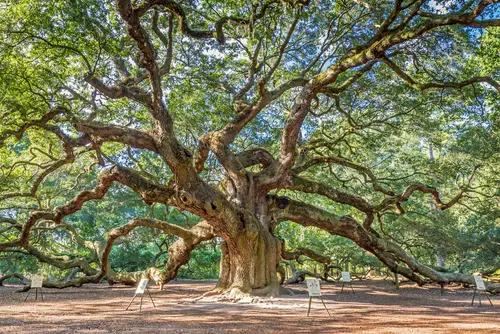
The Angel Oak tree on Johns Island appears like a serene natural wonder, with sprawling branches and a sense of ancient calm. People flock here to admire the tree and snap photos under its canopy. But the tree stands on land that was historically home to enslaved Africans and their descendants. Its roots grew deep while generations experienced systemic oppression, and the surrounding lands carry the echoes of that history.
Though the tree itself seems timeless and peaceful, its context makes it a living monument to resilience. Visitors often sense a strange reverence in its presence, as if nature remembers the people who once lived and labored nearby. The Angel Oak reminds us that natural beauty and historical pain can coexist in profound ways. It’s a place where serenity and reflection meet.
13. Bloody Run, Pennsylvania

The area now called Bloody Run has calm streams and forested areas that seem inviting for hikers or picnickers. Its name, however, tells a darker story from the 18th century. The site witnessed violent encounters between colonial settlers and Native American groups during territorial conflicts. What seems like a peaceful creek was once a site of real bloodshed and tension.
The quiet waters and tree-lined paths hide the human drama that gave the stream its name. Walking there today, you might spot wildlife or hear birds, unaware of the battles that took place centuries ago. The contrast between present-day tranquility and past violence is striking. Bloody Run serves as a reminder that even the most idyllic landscapes can have grim histories.
14. Alcatraz Island, California
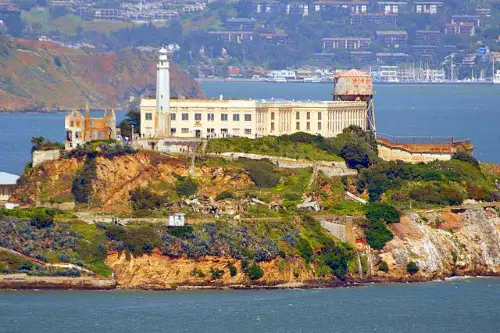
Alcatraz Island looks almost serene from afar, sitting in San Francisco Bay with calm waters surrounding it. The views of the city skyline make it appear like a peaceful getaway. But this infamous prison held some of the most notorious criminals in American history, often under harsh and isolating conditions. The “Rock” witnessed countless escape attempts, despair, and suffering behind its walls.
Visitors now wander through the cells and guard towers, marveling at the architecture and views. The wind-swept island and echoing hallways tell stories of confinement, fear, and resilience. Its beauty is deceptive; Alcatraz is a stark reminder that places can be visually peaceful while having a dark and turbulent past. The contrast makes it both haunting and fascinating to explore.
This post 14 Scenic Spots That Look Peaceful Until You Learn Their History was first published on American Charm.


